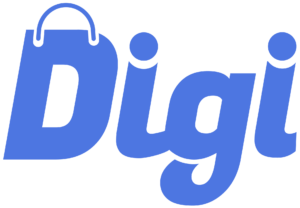With the rapid evolution of technology and the global shift towards a more digitalized economy, understanding digital assets has become more crucial than ever before. This comprehensive guide is designed for beginners who wish to navigate the complexities of the digital world and understand the enormous potential that these assets hold.
So, what are digital assets? At the most fundamental level, a digital asset is any text or media that is formatted into a binary source and includes the right to use it. This includes everything from digital photographs, videos, and music, to software, websites, and cryptocurrencies like Bitcoin and Ethereum.
The most fascinating aspect of digital assets is how they leverage the power of the internet and blockchain technology. Blockchain, a type of distributed ledger technology, ensures the security, transparency, and immutability of these digital assets. The most well-known application of blockchain technology is in cryptocurrencies, which are becoming increasingly mainstream as a form of payment and investment.
Cryptocurrencies are a subset of digital assets and represent a digital or virtual currency that uses cryptography for security. Bitcoin, the first and most well-known cryptocurrency, was created in 2009. Since then, thousands of alternative cryptocurrencies have been developed, each with unique ecosystems and infrastructure.
However, digital assets extend beyond just cryptocurrencies. They also include digital tokens or coins generated by Initial Coin Offerings (ICOs), and more recently, Non-Fungible Tokens (NFTs). NFTs represent a unique class of digital assets that cannot be interchanged with other assets because they contain unique information. They have gained significant attention due to their use in representing ownership of unique pieces of content, such as digital art, music, and even tweets.
It’s also important to understand that digital assets, like any other form of asset, can be used as a store of value, a medium of exchange, or a unit of account. However, due to their digital nature, they come with their own unique set of advantages and challenges.
The advantages of digital assets are numerous. They eliminate the need for intermediaries, making transactions quicker, cheaper, and more efficient. They are easily divisible, making them highly flexible. They also offer the potential for smart contracts – self-executing contracts where the terms of the agreement are directly written into code, increasing transparency and reducing the possibility of disputes.
Despite these benefits, investing in digital assets also comes with risks. Their values can be highly volatile, and they are susceptible to hacking, despite the security measures in place. Regulatory oversight is also still being developed, which can lead to uncertainties.
This is just a brief overview of the vast world of digital assets. Understanding them fully requires further study and constant learning due to their rapidly evolving nature. By educating ourselves about digital assets, we not only prepare for the economy of the future but also uncover opportunities that could yield significant returns.
In the end, like any other asset class, the principle of “buyer beware” applies to digital assets as well. Always do your due diligence, and seek advice from trusted sources or professionals before making any investment decisions.



